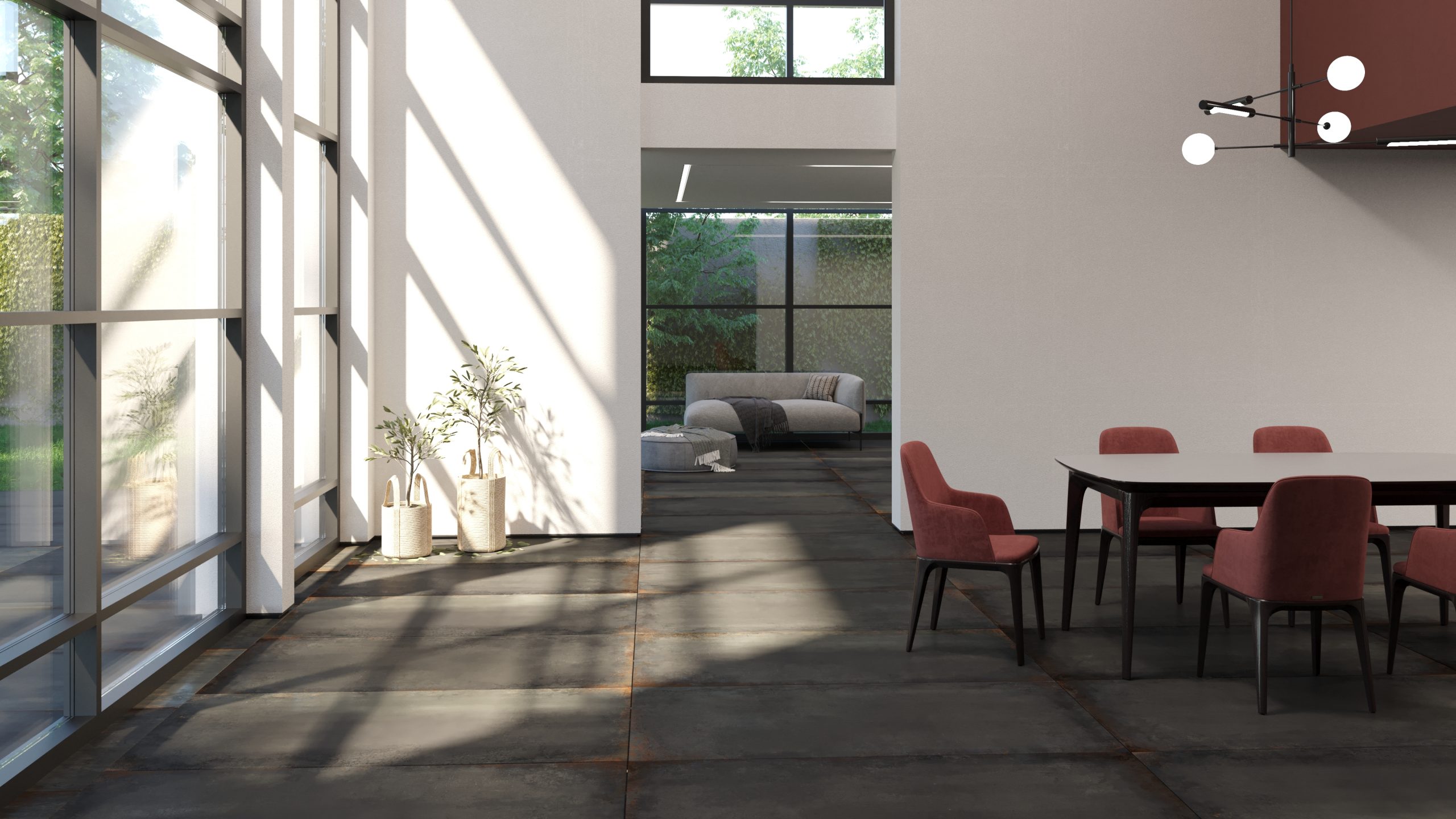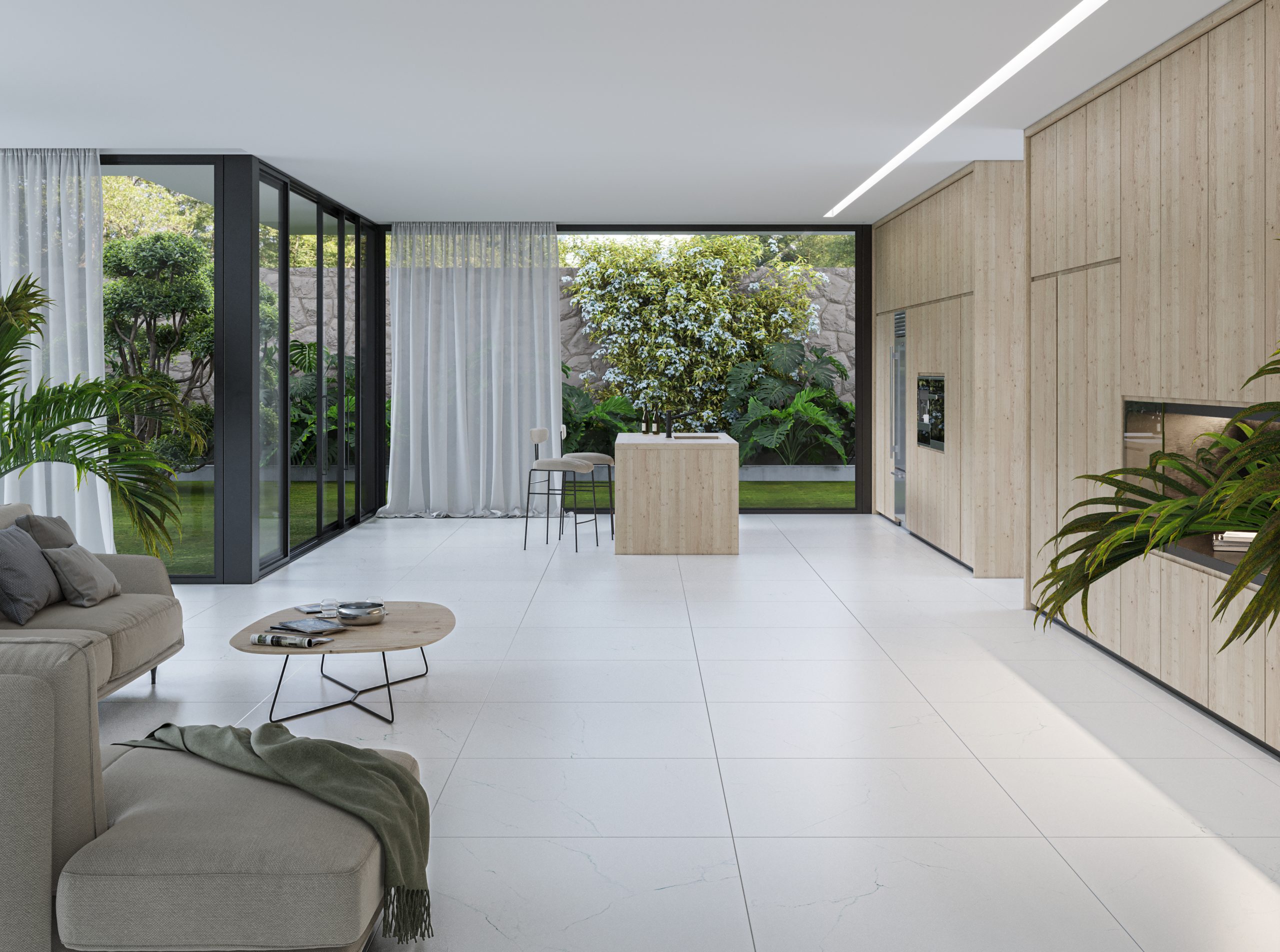Porcelain ceramic is one of the most versatile materials in the construction industry, suitable for various types of residential, commercial, administrative, industrial, and recreational buildings. Due to its high resistance and diverse designs, porcelain ceramic can be employed in different parts of buildings, including floors and facades, to enhance durability, beauty, and performance. Prior to purchasing porcelain ceramic, it's important to consider both its advantages and disadvantages.
Advantages of Porcelain Ceramic
The primary distinction between porcelain ceramic and ordinary ceramic lies in their raw material composition. This distinction in composition results in the development of excellent properties in porcelain ceramics. The advantages of porcelain ceramic stem from its highly compact structure, which contributes to its remarkable characteristics. Porcelain ceramics exhibit a water absorption rate of less than 0.5%, in contrast to the higher water absorption rates of ordinary ceramics. This low porosity grants porcelain ceramics exceptional resistance to temperature fluctuations, impacts, and scratches, setting them apart from regular ceramics. The dense structure inherent in this type of ceramic enhances its strength, and its chemical resistance to chemicals and disinfectants surpasses that of regular ceramic.

Here are some key advantages of porcelain ceramics:
- Unlike the varying physical characteristics seen in different directions of certain materials, the structure of porcelain ceramics is entirely uniform. With an extremely low water absorption rate, approaching zero, porcelain ceramics retain their properties even when in contact with water. Unlike certain construction materials like stones that are sensitive to water and temperature changes, resulting in property loss upon exposure to water and temperature fluctuations, porcelain ceramics remain unaffected.
- Porcelain ceramics achieve a high level of compactness through their firing process at elevated temperatures, resulting in exceptional wear resistance. Unlike some natural stones that can harbor hidden flaws and fractures beneath a thin surface layer, which can erode due to traffic and temperature shifts, exposing these imperfections and detracting from their appearance, porcelain ceramics are fired at high temperatures for extended durations, ensuring that their color remains unaltered over time.
- Another notable trait of porcelain ceramics is their remarkable resistance to acids. This stands in stark contrast to certain types of stones, particularly those containing calcium carbonate and calcite, which exhibit extreme sensitivity to acids. Even weak acids like lemon juice can prompt reactions that lead to stains difficult to remove, potentially culminating in surface corrosion.
- Porcelain ceramics play a role in enhancing energy efficiency. Within enclosed spaces, they absorb and retain energy as temperatures rise. Subsequently, when ambient temperatures decrease, they gradually release the stored warmth. This attribute becomes particularly noticeable once heating devices are deactivated. While heating systems are active, the heat they generate is absorbed by the porcelain ceramics. Following the deactivation of these heating devices, the ambient temperature remains stable for an extended period.
- The composition of porcelain ceramics is such that it doesn't emit harmful chemical substances. They exhibit high stain resistance and can be easily cleaned using standard cleaning agents. Moreover, the longevity and utility of porcelain ceramics are considerable, and they don't come with an expiration date.
Advantages of Utilizing Porcelain Ceramic in Construction Industry
Incorporating porcelain ceramic into building projects yields a host of advantages, resulting in high-quality structures characterized by enhanced durability, aesthetic allure, and improved environmental conditions. The multitude of benefits it brings forth makes it an exceptional choice. Thanks to its compact and non-porous composition, porcelain ceramic boasts remarkable resilience against impact, scratches, and other forms of damage. This intrinsic quality significantly diminishes the necessity for frequent maintenance and repairs in buildings constructed with porcelain ceramic. An additional remarkable attribute of porcelain ceramic is its aesthetic appeal. Revered as a premium and chic architectural material, it elevates structures both visually and functionally. Its varied designs and distinctive colors act as a catalyst for enhancing a building's beauty. Exhibiting an expansive spectrum of patterns and hues, porcelain ceramic empowers designers and architects to craft buildings of extraordinary and captivating aesthetics. The capacity to withstand temperature fluctuations further amplifies its utility, rendering it suitable for regions subject to extreme cold or hot climates. This advantage positions porcelain ceramic as an optimal material for deployment in areas marked by inclement weather and substantial temperature oscillations.
Porcelain ceramic building facade is resistant to corrosion and chemical effects such as acid rain. This property enhances the longevity of the building. Another excellent characteristic of ceramic facades is their non-combustible nature, which prevents the spread of fire in case of an incident.

Disadvantages of Porcelain Ceramics
Despite the numerous advantages that porcelain ceramics offer, they do have a few drawbacks. However, this doesn't mean that these disadvantages have resulted in reduced usage of these ceramics. Let's now address these issues.
Due to the denser and less porous nature of porcelain ceramics compared to regular ceramics, cutting them can be somewhat more challenging than cutting other tiles, requiring greater precision. The compactness and low water absorption, while being superior advantages for porcelain ceramics, also contribute to an increased specific weight. When the weight is substantial, the installation and transportation processes require more careful handling. It's worth noting that the specific weight of natural stones used in construction, such as travertine, granite, and marble, is approximately 2700-2800 kg/m
3. In contrast, the specific weight of porcelain ceramics is around 2200 kg/m
3. For instance, a square meter of porcelain ceramic slab with a thickness of 10 mm weighs about 22 kg, whereas a natural stone like granite, with a thickness of 20 mm, would weigh around 56 kg.
Because of their unique composition and manufacturing process, porcelain ceramics are priced higher than ordinary ceramics, and their installation also incurs greater expenses. However, it's important to note that when compared to the exceptional benefits of porcelain ceramics and their longer lifespan, this price difference is considered minimal. Thanks to their high resistance and durability, the use of porcelain ceramics, despite being a costly investment, can serve as a long-term investment.
Disadvantages of Using Porcelain Ceramic in the Construction Industry
The utilization of porcelain ceramic in the construction industry may entail certain drawbacks. One of these disadvantages pertains to the associated cost. Porcelain ceramic is generally considered one of the more expensive building materials, and, for instance, the price of porcelain ceramic façade tends to surpass that of other facade materials. Its relatively high cost can potentially limit its widespread use in larger projects.
Summary
In light of its advantages and disadvantages, porcelain ceramic emerges as a versatile material with a broad spectrum of applications. Its use spans from ceramic flooring in spaces such as courtyards, parking lots, and rooms, to its exceptional role as a choice for building facades. When considering porcelain ceramic for any application, careful evaluation of specific criteria is essential to make an informed decision. At "Pishgaman Architecture Arya", we proudly present an extensive selection of high-quality porcelain ceramics, encompassing diverse designs and sizes to cater to the needs of our esteemed customers. Our sales engineering team serves as technical consultants, committed to offering guidance tailored to individual requirements, project execution conditions, intended usage, and the technical specifications of our offered products.
Q&A
1- Is porcelain ceramic easy to install?
Yes, while porcelain ceramic is generally easy to install, it demands higher skill and precision compared to regular ceramics. Achieving seamless and uniform surfaces requires meticulous attention to detail and a dedicated time investment.
2- What are the advantages of using ceramics for building facades?
Ceramic facades offer resistance to corrosion and chemical effects such as acid rain, thereby extending the building's lifespan. Their non-combustible nature is another exceptional feature that prevents the spread of fire during emergencies.
3- Why do porcelain ceramics have numerous advantages?
Porcelain ceramics exhibit a water absorption rate of less than 0.5%, which contributes to their high resistance to temperature changes, impacts, scratches, and staining when compared to regular ceramics. This low porosity accounts for their exceptional durability and versatility.
 Here are some key advantages of porcelain ceramics:
Here are some key advantages of porcelain ceramics:

